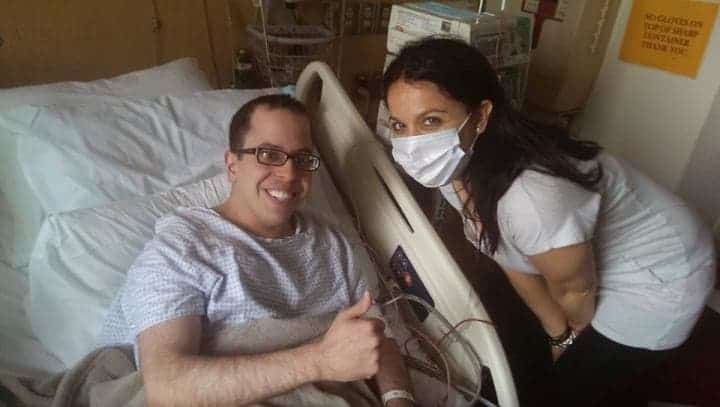David Levy from Northbrook, Illinois had been living all his life with congenital dyserythropoietic anemia (CDA), a rare blood disorder which progressively destroys internal organs and leads to early death. By the time he was 32, Levy had to transfuse all his blood every two to three weeks. The pain was so unbearable he could not lead a normal life. Now, thanks to a novel transplant technique involving stem cells, Levy has been cured by doctors at the University of Illinois Hospital & Health Sciences System.

CDA is an inheritable disease which causes the body to produce insufficient red blood cells, the most common type of blood cell and the main agent for delivering oxygen (O2). Because not enough oxygen is supplied to tissue, particularly organs, these get damaged and can fail in time. As for symptoms, CDA patients will experience tiredness (fatigue), weakness, pale skin, and other complications. There are fewer than 1,000 cases of CDA reported worldwide.
“For many adult patients with a blood disorder, treatment options have been limited because they are often not sick enough to qualify for a risky procedure, or they are too sick to tolerate the toxic drugs used alongside a standard transplant,” said Dr. Damiano Rondelli, who is the Michael Reese Professor of Hematology at the University of Illinois at Chicago and also division chief of hematology and oncology and director of the stem cell transplant program at UI Health.
By the time Levy e-mailed Rondelli, whose work he had read about, the patient had become desperate. At age 24, Levy had to withdraw from graduate school because the pain was unbearable. He spent the next couple of years inactive. He couldn’t work, go to school or keep in touch with friends. All of his focus was directed on managing his pain and getting his good health back.
At age 32, Levy no longer had a spleen, his liver was huge, and was suffering from intense side effects as a result of regular blood transfusions like iron poisoning or heart palpitations.
“It was bad,” Levy said. “I had been through enough pain. I was angry and depressed, and I wanted a cure.”
To treat his condition, the typical procedure involves a stem cell transplant that take over a patient’s bone marrow but not before going through chemotherapy and radiation. Levy’s illness, however, was to severe to handle the chemo and radiation therapy so everyone turned him down. Rondelli and colleagues, however, were working on advances in curing sickle cell patients which didn’t involve chemo. The procedure seemed to fit Levy as well and transplant was made in 2014.
“The transplant was hard, and I had some complications, but I am back to normal now,” said Levy, now 35. “I still have some pain and some lingering issues from the years my condition was not properly managed, but I can be independent now. That is the most important thing to me.”
Since his transplant, Levy has finished his PhD in psychology and is now performing group therapy sessions at a behavioral health hospital. There are no signs that the disease is coming back so for all intents and purposes he is now cured of his form of CDA.
“The use of this transplant protocol may represent a safe therapeutic strategy to treat adult patients with many types of congenital anemias — perhaps the only possible cure,” Rondelli said.
Journal reference: A Oh, P R Patel, N Aardsma, S R Mehendale, R Chowdhery, K Sweiss, D Rondelli. Non-myeloablative allogeneic stem cell transplant with post-transplant cyclophosphamide cures the first adult patient with congenital dyserythropoietic anemia. Bone Marrow Transplantation, 2017; DOI: 10.1038/bmt.2017.17






